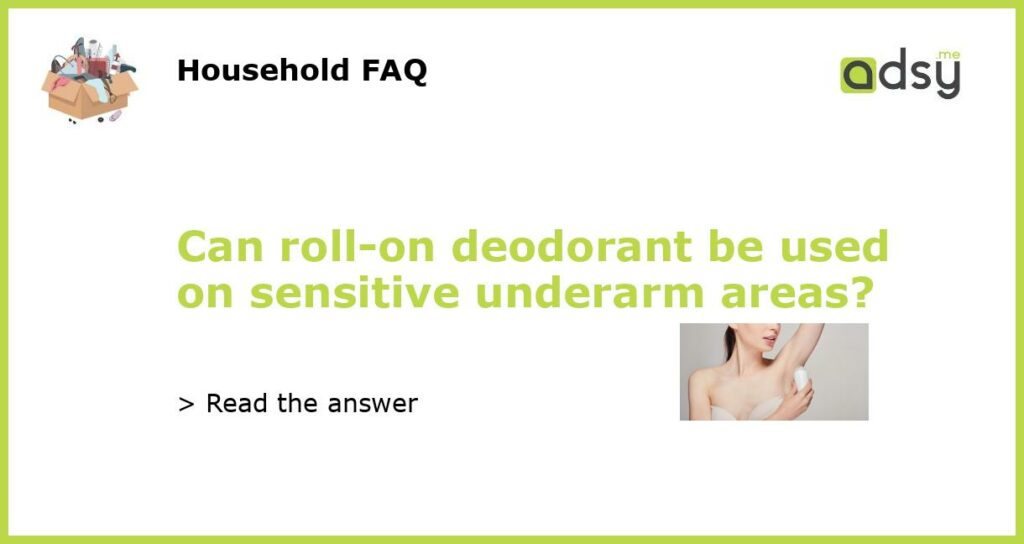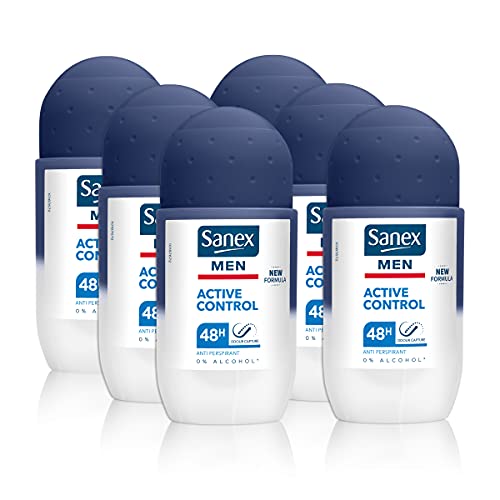Roll-on deodorant and sensitive underarm areas: What you need to know
Roll-on deodorant has long been a popular choice for many individuals looking to stay fresh and odor-free throughout the day. However, for those with sensitive underarm areas, there may be concerns about the potential irritation and discomfort that can come with using these products. So, can roll-on deodorant be used on sensitive underarm areas? Let’s explore this question further.
Understanding sensitive underarm skin
The underarm area is known to have delicate, sensitive skin that is prone to irritation and redness. This can be attributed to several factors, including constant friction from movement, shaving, and the use of certain products. Sensitive underarm skin is more likely to react negatively to harsh ingredients found in some deodorants, leading to discomfort and even allergic reactions.
Choosing the right product for sensitive underarms
When you have sensitive underarm skin, it is crucial to opt for a deodorant that is specifically formulated for sensitive skin or labeled as hypoallergenic. These products are typically free from common irritants such as alcohol, fragrances, and harsh chemicals. Reading the label carefully before purchasing a deodorant can help you make an informed decision and prevent any potential skin reactions.
Tips for using roll-on deodorant on sensitive underarm areas
If you have sensitive underarm skin and still want to use roll-on deodorant, there are a few tips to keep in mind to minimize the risk of irritation:
- Gently cleanse the underarm area before applying deodorant to remove any sweat, bacteria, or residue that could contribute to irritation.
- Allow the underarms to dry completely before applying the deodorant. Wet or damp skin is more prone to irritation.
- Apply a thin layer of deodorant, focusing on the areas that tend to sweat more. Avoid excessive application, as this can increase the likelihood of irritation.
- Give your underarms time to adjust to a new deodorant. If you experience any signs of irritation, such as redness, itching, or a rash, discontinue use immediately.
- Consider patch testing the deodorant on a small area of skin before applying it to your underarms to check for any adverse reactions.
Alternative options for sensitive underarm areas
If you find that roll-on deodorants consistently cause irritation or discomfort, it may be worth exploring alternative options that are gentler on sensitive underarm skin:
- Spray deodorants: Spray deodorants often contain fewer potentially irritating ingredients and can provide a more even and lighter coverage, reducing the risk of irritation.
- Natural deodorants: Natural deodorants typically avoid harsh chemicals and fragrances, making them a suitable option for individuals with sensitive skin. Look for products that are free from aluminum, parabens, and synthetic fragrances.
- Deodorant wipes: Deodorant wipes offer a convenient and gentle option for individuals on the go. These wipes are infused with deodorizing ingredients and can be used to freshen up throughout the day without causing irritation.
- Consult a dermatologist: If you have tried various deodorant options and are still experiencing discomfort, it is advisable to consult a dermatologist. A dermatologist can provide personalized recommendations and help identify any underlying skin conditions that may be contributing to the sensitivity.
In conclusion, while roll-on deodorants can be used on sensitive underarm areas, it is essential to choose the right product and take appropriate precautions. Opting for deodorants specifically formulated for sensitive skin and following proper application techniques can help minimize the risk of irritation and discomfort. If roll-on deodorants continue to cause issues, exploring alternative options or consulting a dermatologist can provide further guidance for individuals with sensitive underarm areas.






